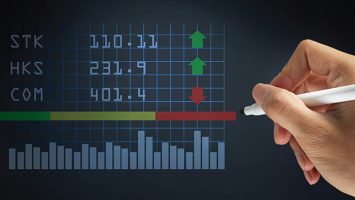Bloodbath on Dalal Street: Panic Selling Wipes ₹16 Lakh Crore in a Day
April 7, 2025, will go down as one of the most bruising days for Indian investors in recent memory.
Markets Suffer Worst Fall Since 2024 Election Results
The Nifty 50 plunged 742.85 points (3.24%) to close at 22,161.60, and the Sensex collapsed 2,226.79 points (2.95%) to finish at 73,137.90—its third-largest single-day market cap loss ever, with ₹16 lakh crore of investor wealth erased.
A Global Storm Hits Indian Shores
The sell-off was part of a global market rout triggered by sweeping tariff announcements from former U.S. President Donald Trump, who launched a trade offensive under the banner of “Liberation Day.” The ripple effects were felt across continents, with Asian and European indices falling as much as 13%, while India held relatively steady by comparison.
The Global Fear Factor
- Trump’s Tariffs: The U.S. slapped fresh tariffs on China (54%), the EU (20%), and others. China responded swiftly with a 34% tariff on U.S. imports and export curbs on key goods.
- Recession Fears: With the threat of stagflation looming, JP Morgan now puts the odds of a global recession at 60%.
- Crude Oil: Brent prices slid to $63.78 per barrel, as demand fears took center stage.
- VIX Surge: India’s volatility index soared by 52%, showing just how anxious the market has become.
Who Got Hit and Who Held On?
Top Losers:
- Tata Steel: -10%
- Tata Motors: -7.86%
- Infosys: -6.98%
- Tech Mahindra: -6.36%
- ICICI Bank: -5.05%
Top Gainer:
- Hindustan Unilever (HUL): Defied the broader trend, rising 0.25% on defensive buying in FMCG.
When Panic Fades: A Midday Turnaround Story
While the day began with intense selling, panic selling gradually gave way to selective buying towards the close. The defensive sectors like FMCG and a few high-quality financial stocks saw late interest as bargain hunters stepped in.
What’s the Long Game? Don’t Panic, Say Experts
“This isn’t the time to sell in fear,” says Prashant Khemka, founder of White Oak Capital. Despite the headlines, he believes that FII flows into India will remain net positive in the long term. He urges retail investors to avoid panic selling, highlighting India’s low export-to-GDP ratio (just 2%) as a cushion against global trade shocks.
Looking Ahead: The Fed Pivot and India’s Next Moves
- All Eyes on the Fed: A closed-door meeting at the U.S. Federal Reserve tonight could hint at a policy pivot to support the global economy.
- RBI Policy Decision (April 9): Expectations are rising for a possible rate cut or liquidity infusion to calm nerves.
- TCS Earnings (April 10): The IT bellwether’s results will be a crucial indicator of sector resilience.
The China Factor: Will Indian Markets Be Flooded?
Ishaan Gera warns of another looming threat: diverted Chinese exports.
With tariffs shutting doors in the U.S., as much as $40 billion worth of Chinese goods could head toward India, pressuring domestic manufacturers in sectors like electronics, chemicals, and auto components.
Long-Term Economic Implications
- Investor Sentiment: Could remain subdued if global tensions persist.
- FII Outflows: Already at ₹13,730 crore in April, with the total at a massive ₹1.46 lakh crore for 2025.
- RBI and Government Response: Policy cues in the coming weeks will be crucial.
- Export Diversification: India may accelerate trade ties with Southeast Asia and Africa to reduce dependency on the U.S.
Bottom Line: Pain Today, But Don’t Miss the Long View
The current chaos is understandably painful but it could offer opportunities for long-term investors. With volatility sky-high and sentiment scraping the bottom, this might just be a buying window for those with patience and a strong stomach.
We expect the markets to start on a positive trend on 8th April 2025.


